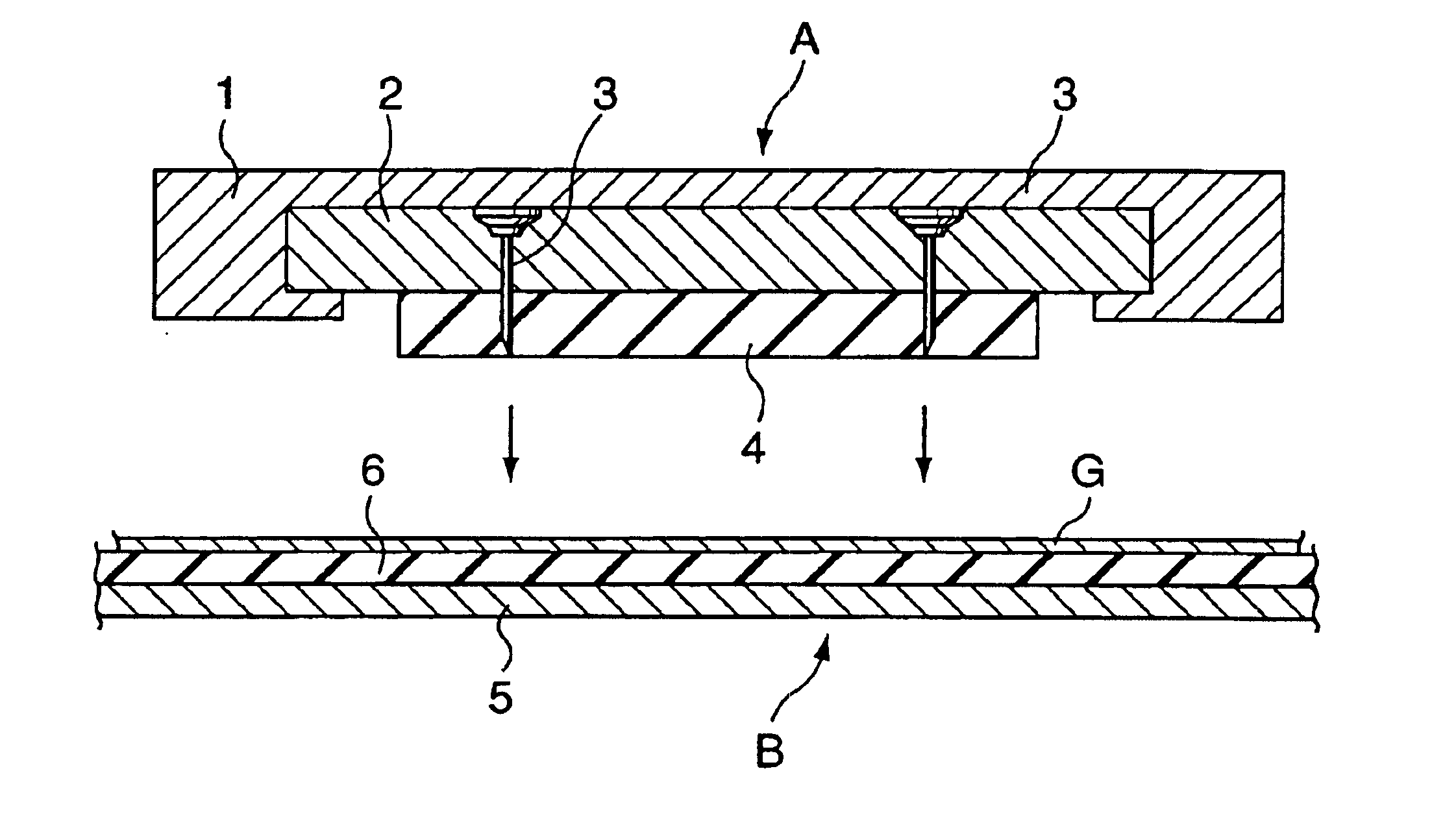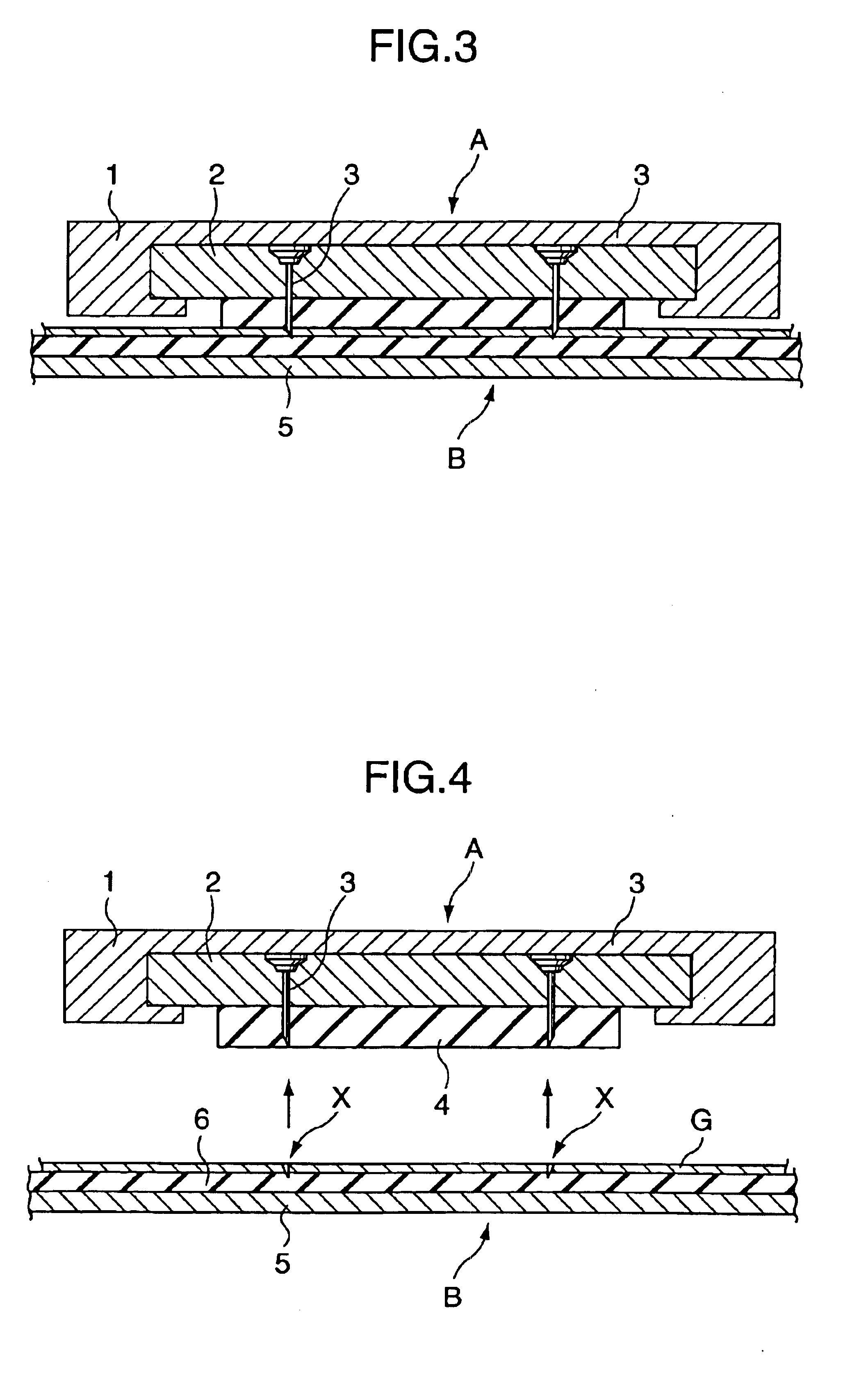Ceramic sheet and process for producing the same
- Summary
- Abstract
- Description
- Claims
- Application Information
AI Technical Summary
Benefits of technology
Problems solved by technology
Method used
Image
Examples
example 2
Preparation of Porous Sheet
[0123]A 150 mm×150 mm square porous sheet having a thickness of about 0.3 mm and a porosity of 40% was prepared in the same manner as in Example 1, except that the thickness of the applied slurry was adjusted and the baking temperature was changed to 1585° C.
Preparation of Zirconia Green Sheet
[0124]A 135 mm×135 mm square zirconia green sheet was prepared in the same manner as in Example 1, except that a green sheet prepared in the same manner as in Example 1 was cut with a double edged blade (a PET punching blade, manufactured by Nakayama Paper Equipment Co., Ltd., Japan) having a blade angle θ of 43°, θ1 of 21.5°, and θ2 of 21.5°.
Preparation of Zirconia Sheet
[0125]The above-prepared porous sheet was placed on a setter, and a corn starch having an average particle diameter of 14 μm and a 90% by volume diameter of 22 μm was sprinkled onto the porous sheet and was uniformly flattened with a blush. The average amount of the applied corn starch was 0.0005 cc / c...
example 3
[0127]A green sheet was prepared in the same manner as in Example 1, except that a commercially available zirconia powder stabilized with 3% by mole of yttria (trade name: HSY-3.0, manufactured by Daiichi Kigenso Kagaku Kogyo Co., Ltd., Japan) was used and that the thickness of the applied slurry was changed. The prepared green sheet was cut to an annular shape having an outer diameter of about 160 mm and an inner diameter of about 26 mm in the same manner as in Example 2, except that a blade unit composed of a double-edged specular-finished blade having a blade angle θ of 30°, θ1 of 15°, and θ2 of 15° was employed.
[0128]By using five plies of the above prepared green sheets and using disc porous sheets having an outer diameter of about 170 mm, the green sheets were baked in the same manner as in Example 2 to yield annular zirconia sheets stabilized with 3% by mole of yttria and having an outer diameter of about 120 mm, an inner diameter of about 20 mm, and a thickness of about 100 ...
example 4
[0129]A nickel-zirconia green sheet was prepared in the same manner as in Example 1, except that a mixture of 60% by mass of a nickel oxide powder (manufactured by Kishida Chemicals Co., Ltd., Japan) and 40% by mass of a zirconia powder stabilized with 8% by mole of yttria (trade name: HSY-8.0) was used and that the binder was used in a proportion of 13 parts by mass.
[0130]The above-prepared green sheet was cut to a 175 mm×175 mm square sheet in the same manner as in Example 1, except that the blade used in Example 1 was provided with an orange rubber (trade name: orange, manufactured by Nakayama Paper Equipment Co., Ltd., Japan) as a hanging plate. Three plies of the green sheets and four plies of porous sheets each composed of a nickel aluminate spinel having a porosity of 15% were alternately stacked in such a manner that each green sheet was sandwiched between two porous sheets. The resulting stack was placed on an alumina setter and was baked at 1350° C. for 3 hours to yield an...
PUM
| Property | Measurement | Unit |
|---|---|---|
| Length | aaaaa | aaaaa |
| Length | aaaaa | aaaaa |
| Length | aaaaa | aaaaa |
Abstract
Description
Claims
Application Information
 Login to View More
Login to View More - R&D
- Intellectual Property
- Life Sciences
- Materials
- Tech Scout
- Unparalleled Data Quality
- Higher Quality Content
- 60% Fewer Hallucinations
Browse by: Latest US Patents, China's latest patents, Technical Efficacy Thesaurus, Application Domain, Technology Topic, Popular Technical Reports.
© 2025 PatSnap. All rights reserved.Legal|Privacy policy|Modern Slavery Act Transparency Statement|Sitemap|About US| Contact US: help@patsnap.com



